I’m very pleased to welcome Bernard S. Wilson as our guest blogger today. Bernard is British and a retired university lecturer. Graduating from the University of London with a Bachelor of Divinity and a MA in education from the University of Leeds, Bernard’s professional life was centered around teaching children in secondary and grammar schools.
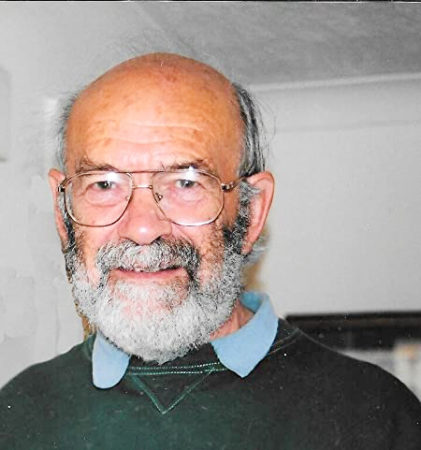
For seven years, Bernard undertook research into the story of Mary Elmes. He uncovered the details showing that she saved Jewish children from deportation at the risk of her life. Professor Ronald Friend, one of the boys Mary saved, presented Bernard’s information to Yad Vashem in Jerusalem which resulted in Mary’s posthumous honor as “Righteous Among the Nations” in 2013.
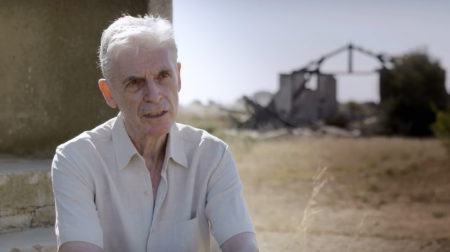
Bernard is the author of several books including the children’s book, Miss Mary. In addition to contributing to documentaries, Bernard was a consultant for two biographies on Mary Elmes⏤A Time to Risk All (Clodagh Finn) and The Extraordinary Story of Mary Elmes (Paddy Butler).
Did You Know?
Did you know that The Crop Club isn’t a club dedicated to growing food? The Crop Club was founded in 1795 in London for men who had shaved their heads to avoid paying a special tax. The prime minister, William Pitt the Younger, initiated a new tax in 1786 to raise money for the wars against France. The new tax was one guinea per year levied on hair powder. (A 1795 guinea is equivalent to £128, or US$169 today.) To pay the tax, one had to visit a government office and then receive a certificate allowing them to purchase hair powder. So, men shaved their heads and formed The Crop Club as a way of protesting the tax. The hair powder tax and certificate requirements remained in place until 1869. The tax never brought in the anticipated revenues. All the tax did over the years was to hasten the demise of men’s fashion for hair powder.
It just goes to prove; tax policy does influence behavior.
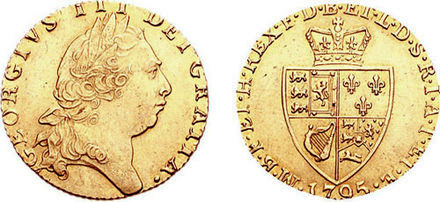
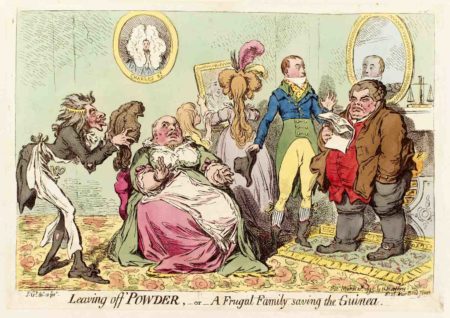
Mary Elmes (1908-2002)
It was just twenty years ago that a very old lady passed away in the southern French city of Perpignan. Mary Danjou (née Elmes) was ninety-three and was much loved by her two children Caroline (b. 1946) and Patrick (1948−2022), her grandchildren, and great-grandchildren. But apart from her immediate family, there were few who knew her well enough to mourn her passing. She was Irish by birth, but had left Ireland over seventy years previously, and no-one in her home country remembered her. Her children knew that before she had married their father Roger Danjou, she had lived a dangerous and exciting life in Vichy France where she had worked ceaselessly among the internment camps of the Pyrénées-Orientales. And before that, they knew that she had been in charge of several hospitals in Spain during the Spanish Civil War with injured and orphaned children in her care. They had a book of photographs of many of these children and they had a collection of drawings, paintings and beautiful objects carved out of wood and bone which had been given to her by grateful camp inmates. But she had not kept a diary and she never talked about those days. Now she was gone, and her family knew that they would never know the full story of her wartime deeds.
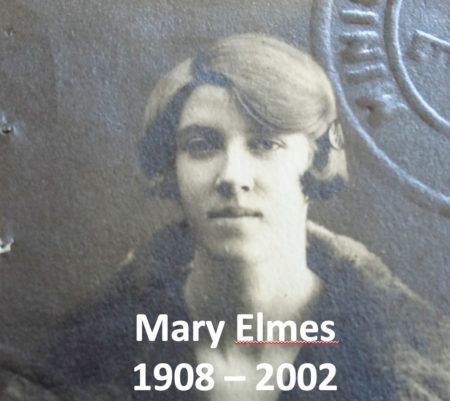
Historical Detective Story
But then some eight years later, in December 2010, an elderly American professor of psychology made an important decision. He knew that as a very small child, he had been rescued from an internment camp in the south of France. He was Jewish and had somehow survived the Holocaust. He thought that it was about time that he found out the circumstances of his survival and if possible, to thank those concerned. A Jewish organisation was able to tell him that it was thanks to the Quakers and a woman called Mary Elms (sic) that he and his brother had been rescued from the camp and whisked away to safety. He searched online for more information and found a blog written by an English Quaker who was able, after some research, to provide him with enough evidence to present to Yad Vashem and to have Mary honoured as “Righteous Among the Nations”.
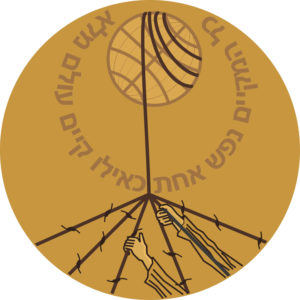
This researcher had access to the archives of the AFSC (American Friends Service Committee) and he was able to show Mary’s two children how she had been able to save, not just two, but a much larger number of Jewish children from certain death. She had already arranged with the camp authorities to take Spanish children out of the camps and house them in empty hotels and grand houses in the mountains or by the sea. There, they could live normal lives away from the filth and disease of the camps. They could sleep in proper beds, eat nutritious meals, wash themselves in decent bathrooms and play together like children the world over. Of course, they would have to go back to the camps after a month or two in order to make room for another batch of children. But when the trains began to take thousands of Jewish families from the camp of Rivesaltes, Mary started to send Jewish children as well as Spanish children to what were known as the “colonies.” They were hidden among the Spanish children, and when the time came for them to be returned to the camps, she managed to move the Jewish children away to safety. This was dangerous work, and eventually Mary was arrested and sent to Fresnes, the Gestapo prison near Paris. It was only her Irish nationality which eventually saved her and secured her release as a member of a neutral country.
Early Life
So, at last, Mary’s family began to learn about their mother’s exploits in saving children from the gas chambers of Poland. In return, the researcher was able to learn more about Mary’s early life. He found that she had a first-class honours degree in French and Spanish from Trinity College, Dublin, and a further advanced qualification from the London School of Economics. While studying in London she had met Sir George Young and she had travelled to Gibraltar with Lady Young and two Spanish ladies who had been working for Sir George in England. With the outbreak of the Spanish Civil War, they wished to return home and Sir George had asked Mary to escort them from Gibraltar to their home in Spain. She had a pass allowing her just five days in Spain, but having safely delivered her charges to their homes, she presented herself to the Quaker group in Gibraltar and asked to be allowed to join them in working with needy Spanish children. Sir George was looking for volunteer doctors and nurses, but Mary had no medical qualifications. Somewhat cautiously the Quakers allowed her to join them despite her lack of medical knowledge and possession of a proper passport.
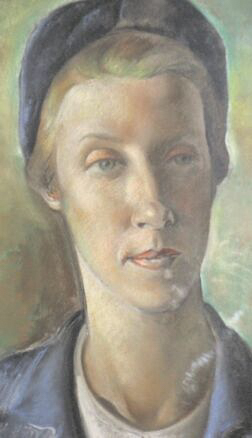
Spanish Civil War
Mary’s first task was to care for the women and children fleeing the burning city of Malaga on their way to Almeria. The hundred-mile coast road became the scene of the first real involvement of civilians in deliberate deadly attacks by aircraft bombing and machine gunning the terrified refugees. Her courage and resourcefulness were soon appreciated, and she was appointed to take charge of a series of hospitals as the front moved north towards the Pyrénées. During this time, word reached her that her father had died, and her mother needed her to return home. She was willing to do this, but only if she could be replaced in the hospital for which she was responsible. This proved to be impossible, and so Mary stayed at her post as hospital administrator.
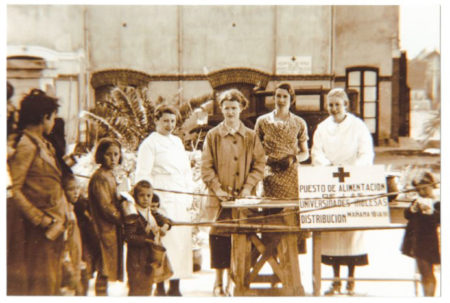
Eventually the war came to an end with the defeat of the Republicans. Mary returned home to Cork, while half a million Spanish men, women and children crossed the Pyrénées in snow and ice, still being attacked by German and Italian aircraft. When they arrived in France, they were shepherded onto the vast sandy beaches of Argeles-sur-Mer and contained there by barriers of barbed wire. There was no shelter, and for washing and toilet facilities, there was the sea. Food was thrown over the barbed wire for the refugees to scramble for. When Mary read this news in the papers, when she saw the terrible pictures of what was happening to the women and children she had cared for, she soon got herself appointed to work amongst them bringing them musical instruments, artist materials, books, toys for the children, and all manner of things to make their lives more tolerable.
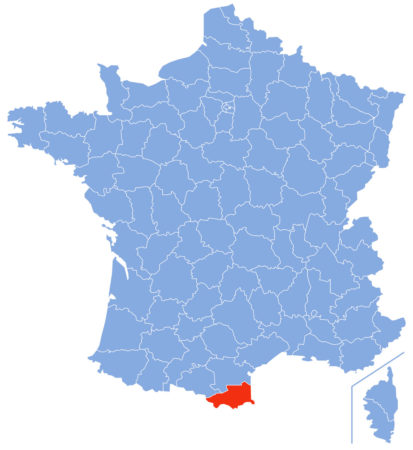
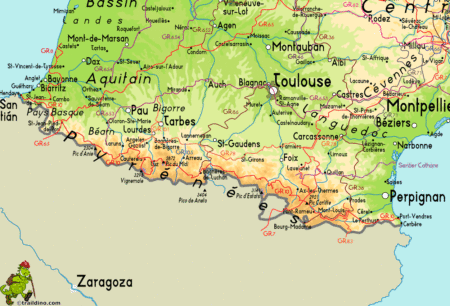
Rivesaltes Transit Camp
Even though some shelters were being constructed on the beaches, it was realised that better conditions would have to be found for the thousands of refugees. An old army camp near the town of Rivesaltes was pressed into service. It was abandoned by the army as it was thought to be too hot in the summer and too cold in the winter for the horses. Nevertheless, it was deemed suitable for the Spanish women and children. Most of the Spanish men had been sent off elsewhere in working parties. There were grand ideas. There was to be a hospital area with doctors and nurses. It was going to be a comfortable home for the thousands of people stranded there. But these ideas never materialised. There was no running water, no decent sanitation, no heating in the winter and no shade in the summer. There was food, but less than sufficient for survival. The only thing that was in plenty was the wind. The wind was remorseless. People said that it was the wind more than anything else which made life in Rivesaltes so intolerable. But there were other things too. There were rats and there was disease. Typhus was spreading through the camp. People were dying daily. It was to these conditions that Mary Elmes came with her smile, her tender care, and for the children her pockets full of snacks, chocolate, fruit, and other treats. They called her “Miss Mary” and they loved her.
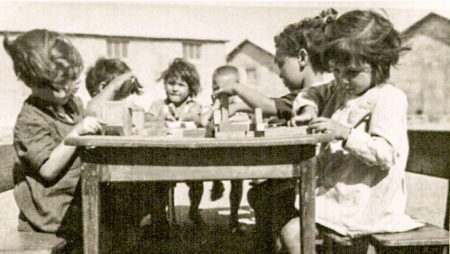
Mary’s work wasn’t confined to the camps. The French children in the towns and villages of that part of France were hungry too. Perpignan and the area around were famous for its wine and its fruit. But there was little agriculture and few dairy farms. Children went to school with only ersatz coffee for breakfast. They didn’t go home at midday because there was nothing for them to eat at home. So, Mary began to supply food for school dinners. She insisted on children being weighed weekly so that she could keep an eye on their progress. The archives have letters written by schoolchildren to Mary thanking her for the food she was able to supply. Francine Delmas wrote “All the children in this school, even the littlest ones know your name Miss Mary”.
Postwar
When finally, the war was over and things slowly began to return to normal, Mary married a Frenchman, Roger Danjou. The archives show that even though food was still rationed, the city thanked Mary for all that she had done by providing a farewell feast after her wedding. One observer recorded that he had never seen so many tears. “Miss Mary” was leaving, and everyone would miss her. The mayor of Perpignan wanted to propose her for the French Legion of Honour, but she would have none of it! How sad then, that when she passed away sixty years later, she was virtually unknown!
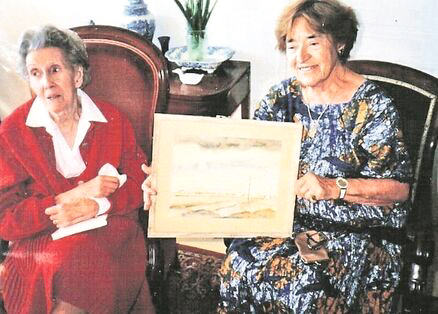
Righteous
In 2013 Mary was declared as “Righteous Among the Nations” and the following year a presentation of the Honour took place in Canet Plage, the seaside town near Perpignan where some of the Jewish children had been hidden amongst the Spanish at the Villa St Christophe. One of the two Mennonite workers who had run this “colony” had kept a diary – unlike Mary, and this diary showed the names of Jewish children who had been hidden there. It became obvious that it wasn’t only Ron Friend (the American professor) and his brother who had been saved by Mary. There were many others – perhaps even hundreds who owed their lives to “Miss Mary”. The story began to spread until it reached Ireland, the country of her birth. In the year 2019, the Mary Elmes Bridge was opened. It spanned the river Lee in Cork and is today a constant reminder of a wonderful woman who was very nearly forgotten but now remembered for all time.
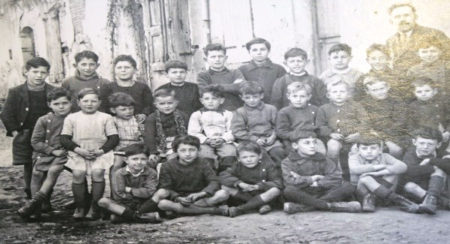
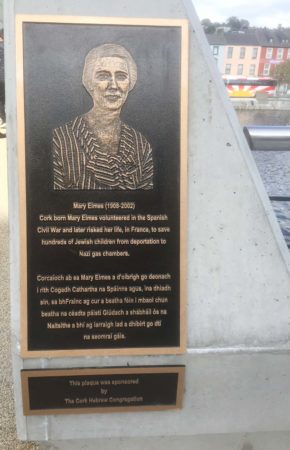
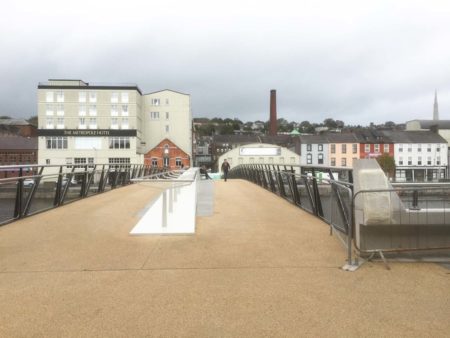
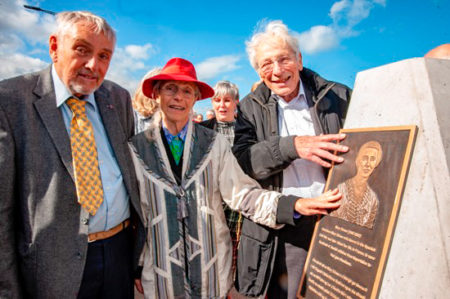
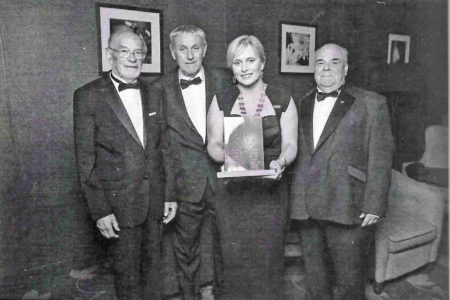
Stew’s Postscript
Yad Vashem was established to perpetuate the memory of the six million Jewish victims of the Holocaust. One of its principal duties is to convey the gratitude of the State of Israel and the Jewish people to “Righteous Among the Nations” (i.e., non-Jews) who took great risks to save Jews during the Holocaust. There are specific and stringent requirements to achieve this honor. Those recognized receive a medal and a certificate of Honor and their names are commemorated on the Mount of Remembrance in Jerusalem. There are 27,921 Righteous (as of 1 January 2021) and Mary Elmes is the only Irish citizen to be honored. Click here to learn more about Yad Vashem “Righteous Among the Nations”.
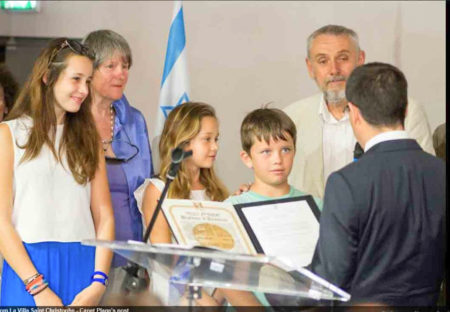
The Rivesaltes camp, located in the Pyrénées-Orientales area near France’s border with Spain, served as a displacement camp during the Spanish Civil War and later as a prison for Republican refugees. Vichy used the camp during the occupation as a transit camp. Arrested Jews and others were interned here before their deportation to the extermination camps. (KZ Auschwitz II-Birkenau was the primary destination.) The first internees arrived in early January 1941 and the camp reached its peak population in the same year. At that time, there were eight thousand prisoners of which, three thousand were children separated from their parents. After Rivesaltes was closed in November 1942, the remaining internees were sent to the Gurs detention camp.
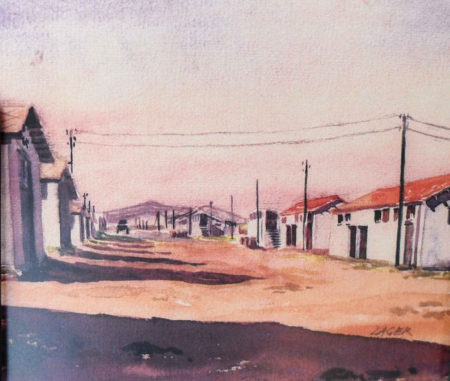
On 25 September 1942, two young brothers, René (age two) and Mario (age six) Freund were taken out of Rivesaltes and driven up into the Pyrénées Mountains to a remote village. There they were met by a priest and the boys were moved again to another small village. They enrolled in a Catholic school and were hidden by local families. Using information uncovered by Bernard (“the researcher”), Professor Ronald Friend (René) and Michael Freund (Mario) nominated their rescuer, Mary Elmes, to Yad Vashem as “Righteous Among the Nations.”
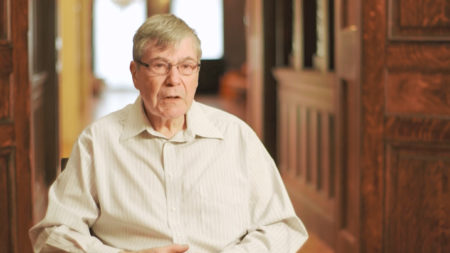
I thought I’d add this at the end to help our readers identify the “players” in the blog.
“American professor of psychology” = Dr. Ronald Friend
“Blog written by English Quaker” = Bernard S. Wilson
“Researcher” = Bernard S. Wilson
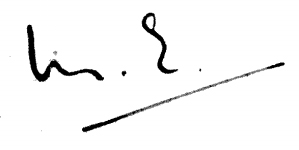
★ Learn More About Mary Elmes ★ ★
Butler, Paddy. The Extraordinary Story of Mary Elmes: The Irish Oskar Schindler. Dublin: Orpen Press, 2017.
Finn, Clodagh. A Time to Risk All: The incredible untold story of MARY ELMES, the Irish woman who saved children from Nazi concentration camps. Dublin: Gill Books, 2017.
Rees, Evan. Sketches of the Horrors of War. “The Journal of the Friends Historical Society.” Volume 67, 2016 (Pages 42 through 50).
Wilson, Bernard S. Bernard’s Journey to Discover the Irish Schindler. Click here to read Bernard’s blog post.
Wilson, Bernard S. Illustrated by Julia Castaño. Miss Mary: The IRISH WOMAN who saved the lives of hundreds of CHILDREN during World War II. Dublin: Gill Books, 2020.
Bernard wrote and self-published a book, See You Soon Caroline, for teenagers and young adults. It was based on his journey of discovery with the story about Mary Elmes. After Mary was honored as “Righteous,” Bernard wrote the children’s book, Miss Mary. Afterward, Bernard decided to update “Caroline” and retitle it as Grandad’s Journey: A Holocaust Mystery. This new book will be published in April 2022. I highly recommend you read Bernard’s blog post (“My Journey”) for the detailed story of his research and interaction with everyone associated with Mary’s story.
Disclaimer:
There may be a chance that after we publish this particular blog, the video links associated with the blog are no longer accessible. We have no control over this. Many times, whoever posts the video has done so without the consent of the video’s owner. In some cases, it is likely that the content is deemed unsuitable by YouTube. We apologize if you have tried to access the link and you don’t get the expected results. Same goes for internet links.
What’s New With Sandy and Stew?
I’d like to thank Dr. Marianne Golding for reaching out to us in late January for the purpose of purchasing our new book. This began a conversation which over time led me to discover the story of Mary Elmes, Alice Resch Synnestvedt, and the Quaker organization in southern France. It also introduced me to Marianne’s father, Édouard Seidler, who as a young boy, was escorted along with his sister to the border of Switzerland where they successfully crossed thus escaping certain death at the hands of the Nazis. It was Mary, Alice, and the Quakers who saved the lives of Marianne’s father and aunt as well as hundreds of children.
Our next blog on 26 March, An (extra)Ordinary Holocaust Story of Survival, will be Marianne’s account of her father’s escape made possible by Alice and you will be able to tie together the amazing and dangerous activities of Mary and Alice.
Thank you to all of you who subscribe to our bi-weekly blogs. It seems there isn’t a day that goes by where we don’t increase our readership. Please let your history buff friends and family members know about our blog site and blogs.
Someone Is Commenting On Our Blogs
I’d like to thank Fran F. for requesting some assistance in identifying a mid-1850s stereoview photo taken by Léon Jouvin. Unfortunately, I couldn’t be much help.
Anna F. contacted us about her father who personally knew Madame Andrée. (click here to read the blog, The Sussex Plan) This is the fourth or fifth time someone let us know either they personally knew or a relative knew Madame Andrée and frequented the Café Sussex.
Finally, Roslyn had some comments on the blog, S.S. City of Benares (click here to read the blog). We struck up a conversation that led to some interesting insights into Sir William Orpen (click here to read the blog, The Racer, the Spy, and the Erotic Model).
If there is a topic you’d like to see a blog written about, please don’t hesitate to contact me. I love hearing from you so keep those comments coming.
Why Would You Want to Buy Our Walking Through History Books?
Simple.
You like to travel and experience history and historical events. You like to see original buildings that had a significant impact on the people and events of the history you’re engaged with. You want to know the stories behind the brick and mortar in front of you.
The walking tour books are meticulously researched so you can go directly to those sites and learn about the building’s history as well as an introduction to some of the more interesting people associated with it.
We Need Your Help
Please tell your friends about our blog site and encourage them to visit and subscribe. Sandy and I are trying to increase our audience and we need your help through your friends and social media followers.
Thank You
Sandy and I appreciate you visiting with us. We have some exciting things on the horizon, and we’ll keep you updated as we go along.
Share This:
Follow Stew:
Find Stew’s books on Amazon and iBooks.
Please note that we do not and will not take compensation from individuals or companies mentioned or promoted in the blogs.
 Walks Through History
Walks Through History
Copyright © 2022 Stew Ross


A truly inspirational story of caring and courage that deserves to be remembered. Another excellent blog. As always, the accompanying photos tell a great story too. Cheers.
Good to hear from you Greg. Thanks for your kind words. Our next blog will tie into today’s post and it will also feature a survivor of the Holocaust. Hope you enjoy it. STEW
This is a beautiful story. There are so many good people like Mary Elmes. Unfortunately they are outnumbered by the truly evil and – worse! – those who COULD have done something but I stead chose to do NOTHING. And these people are still with us today.
Good to hear from you again Jane. Thanks for your comments. Yes, unfortunately, these people will always be with us. Hope you enjoy our next blog, “An (extraordinary) Holocaust Story.” It builds on the recent blog but from a different perspective. STEW
What a truly wonderful story of a great woman
Hi Mike; Thanks for contacting us about the blog. Yes, she was a very brave woman. One of those stories about World War II that has been lost in the fog of history. Hope you enjoy our future (and past) bi-weekly blogs. STEW